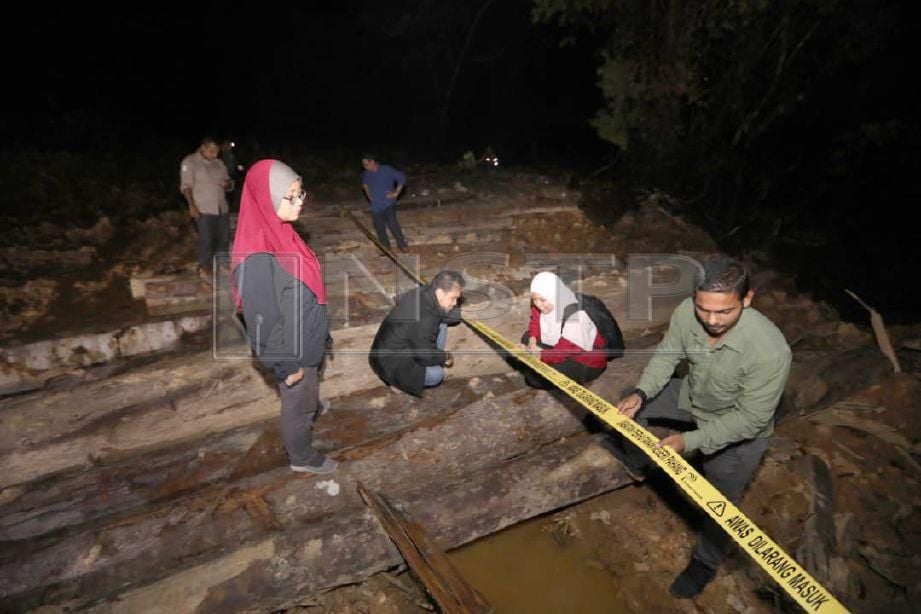It doesn't seem possible. But they say it's true. A small
team of Israeli scientists is telling the world they will have the first
“complete cure” for cancer within a year, The Jerusalem Post reported on
Monday. And not only that, but they claim it will be brief, cheap and effective
and will have no or minimal side-effects.
“We believe we will offer in a year’s time a complete cure
for cancer,” said Dan Aridor, chairman of the board of Accelerated Evolution
Biotechnologies Ltd. (AEBi), a company founded in 2000 in the ITEK incubator in
the Kiryat Weizmann Science Park in Ness Ziona, Israel, just north of the
Weizmann Institute of Science in Rehovot, Israel. A development-stage
biopharmaceutical company engaged in discovery and development of therapeutic
peptides, AEBi developed the SoAP platform, a combinatorial biology screening
platform technology, which provides functional leads—agonist, antagonist,
inhibitor, etc.—to very difficult targets.
Still skepticism was high among those in the know. Weighing
in on behalf of the American Cancer Society (ACS) on his blog, “A Cure For
Cancer? Not So Fast,” Len Lichtenfeld, MD, ACS chief medical officer cautioned:
“…it goes without saying, we all share the aspirational hope that they are
correct. Unfortunately, we must be aware that this is far from proven as an
effective treatment for people with cancer, let alone a cure."
list several key points that he says must be kept in mind no
matter what media reports say:
This is a news report based on limited information provided
by researchers and a company working on this technology. It apparently has not
been published in the scientific literature where it would be subject to
review, support and/or criticism from knowledgeable peers.
My colleagues here at American Cancer Society tell me phage
or peptide display techniques, while very powerful research tools for selecting
high affinity binders, have had a difficult road as potential drugs. If this
group is just beginning clinical trials, they may well have some difficult
experiments ahead.
This is based on a mouse experiment which is described as
“exploratory.” It appears at this point there is not a well-established program
of experiments which could better define how this works—and may not work—as it
moves from the laboratory bench to the clinic.
We all have hope that a cure for cancer can be found and
found quickly. It is certainly possible this approach may be work. However, as
experience has taught us so many times, the gap from a successful mouse
experiment to effective, beneficial application of exciting laboratory concepts
to helping cancer patients at the bedside is in fact a long and treacherous
journey, filled with unforeseen and unanticipated obstacles.
It will likely take some time to prove the benefit of this
new approach to the treatment of cancer. And unfortunately–based on other
similar claims of breakthrough technologies for the treatment of cancer–the
odds are that it won’t be successful.
“Our hopes are always on the side of new breakthroughs in
the diagnosis and treatment of cancer. We are living in an era where many
exciting advances are impacting the care of patients with cancer,” Lichtenfeld
went on. “We hope that this approach also bears fruit and is successful. At the
same time, we must always offer a note of caution that the process to get this
treatment from mouse to man is not always a simple and uncomplicated journey.”
Called MuTaTo (multi-target toxin), researchers said the
drug is essentially "on the scale of a cancer antibiotic–a disruption
technology of the highest order."
Aridor told The Jerusalem Post: “Our cancer cure will be
effective from day one, will last a duration of a few weeks and will have no or
minimal side-effects at a much lower cost than most other treatments on the
market. Our solution will be both generic and personal.”
Currently in development by AEBi under the leadership of CEO
Dr. Ilan Morad, the potential game-changer in the world-wide fight against
cancer will use a combination of cancer-targeting peptides and a toxin that
will specifically kill cancer cells.
The Jerusalem Post reported that the anti-cancer drug is
based on AEBi's so-called SoAP technology, which belongs to the phage display
group of technologies. With it, “scientists introduce DNA coding for a protein,
such as an antibody, into a bacteriophage – a virus that infects bacteria. The
protein is then displayed on the surface of the phage. Researchers can use
these protein-displaying phages to screen for interactions with other proteins,
DNA sequences and small molecules.”
A team of scientists won the Nobel Prize last year for their
work on phage display in the directed evolution of new proteins – in
particular, for the production of antibody therapeutics, The Jerusalem Post
reported. “AEBi is doing something similar but with peptides, compounds of two
or more amino acids linked in a chain.” According to Morad, peptides have
several advantages over antibodies, including that they are smaller, cheaper,
and easier to produce and regulate.
According to an article in Elsevier’s Science Direct,
peptide therapeutics have played a notable role in medicine since the advent of
insulin therapy in the 1920s. “Over 60 peptide drugs are approved in the United
States and other major markets, and peptides continue to enter clinical
development at a steady pace,” the article states.
The International Agency for Research on Cancer (IARC) of
the World Health Organization (WHO) estimates the global cancer burden to have risen to 18.1
million new cases and 9.6 million deaths in 2018. The IARC reports 1 in 5 men
and 1 in 6 women worldwide develop cancer during their lifetime, and 1 in 8 men
and 1 in 11 women die from the disease. In addition, every sixth death in the
world is due to cancer, making it the second leading cause of death, second
only to cardiovascular disease.
Morad said in its infancy, AEBi was essentially “doing what
everyone else was doing, trying to discover individual novel peptides for
specific cancers.”
But then Morad and his colleague, Dr. Hanan Itzhaki, began
attempting to identify why other cancer-killing drugs and treatments didn’t
work or eventually failed. And they say they’ve found a way to counter that
effect.
Morad said most anti-cancer drugs attack a specific target
on or in the cancer cell. “Inhibiting the target usually affects a
physiological pathway that promotes cancer. Mutations in the targets – or
downstream in their physiological pathways – could make the targets not
relevant to the cancer nature of the cell, and hence the drug attacking it is
rendered ineffective,” he told The Jerusalem Post.
“In contrast, MuTaTo is using a combination of several
cancer-targeting peptides for each cancer cell at the same time, combined with
a strong peptide toxin that would kill cancer cells specifically,” Morad said.
“By using at least three targeting peptides on the same structure with a strong
toxin, we made sure that the treatment will not be affected by mutations;
cancer cells can mutate in such a way that targeted receptors are dropped by
the cancer.”
“The probability of having multiple mutations that would
modify all targeted receptors simultaneously decreases dramatically with the
number of targets used,” Morad continued. “Instead of attacking receptors one
at a time, we attack receptors three at a time – not even cancer can mutate
three receptors at the same time.”
According to Morad, many cancer cells activate
detoxification mechanisms when in stress from drugs and the cells pump out the
drugs or modify them to be non-functional. Morad told The Jerusalem Post that
detoxification takes time, and he’s banking on a strong toxin that will have a
high probability of killing the cancer cell before that detoxification occurs.
“Many cytotoxic anticancer treatments aim at fast-growing
cells. But cancer stem cells are not fast growing, and they can escape these treatments.
Then, when the treatment is over, they can generate cancer again,” The
Jerusalem Post reported.
“If it does not completely annihilate the cancer, the
remaining cells can start to get mutations again, and then the cancer comes
back, but this time it is drug resistant,” Morad said.
Because cancer cells are born out of mutations that occur in
cancer stem cells, most of the over-expressed proteins which are targeted on
the cancer cell exist in the cancer stem cells. “MuTaTo’s multiple-target attack
ensures that they will be destroyed as well,” he said.
Finally, some cancer tumors can erect shields which prohibit
large molecules from accessing them. “MuTaTo acts like an octopus or a piece of
spaghetti and can sneak into places where other large molecules cannot reach,”
Morad said. “The peptide parts of MuTaTo are very small (12 amino acids long)
and lack a rigid structure. This should make the whole molecule non-immunogenic
in most cases and would enable repeated administration of the drug.”
Morad said AEBi's discovery could also decrease the
sickening side-effects of most cancer treatments dramatically, which are the
result of drug treatments interacting with the wrong or additional targets, or
the correct targets but on non-cancerous cells. “He said MuTaTo’s having a
combination of several highly specific cancer-targeting peptides on one
scaffold for each type of cancer cell would increase the specificity to the
cancer cell due to the avidity effect. In addition, in most cases, the
non-cancer cells that have a protein in common with the cancer cells do not
over-express it.”
Morad equated the concept of MuTaTo to the triple drug
cocktail that has helped change AIDS “from being an automatic death sentence to
a chronic – but often manageable – disease.” Today people with AIDS and HIV are
carriers of the disease, but they are not sick anymore. And the reason is the
combination of drugs they are given.
“Today, AIDS patients take protease inhibitors in
combination with two other drugs called reverse transcriptase inhibitors,” The
Jerusalem Post reported. “The drug combination disrupts HIV at different stages
in its replication, restrains an enzyme crucial to an early stage of HIV
duplication and holds back another enzyme that functions near the end of the
HIV replication process.”
“We used to give AIDS patients several drugs, but we would
administer them one at a time,” Morad explained. “During the course of
treatment, the virus mutated, and the AIDS started attacking again. Only when
patients started using a cocktail, were they able to stop the disease.”
According to Morad, the MuTaTo cancer treatment will
eventually be designed specifically for each person. A piece of each patient’s
biopsy will be given to the lab, which will then analyze it to know which
receptors are over-expressed, he said. “The individual would then be
administered exactly the molecule cocktail needed to cure his disease.”
But unlike with HIV and AIDS, where patients must take the
cocktail for the rest their lives, with MuTaTo, the cells would be killed, and
the patient could likely stop treatment after only a few weeks.
Aridor said AEBi is in the process of writing patents on
specific peptides, which will be a large bank of targeting toxin peptides
wholly owned and hard to break.
The company has finished exploratory mice experiments, which
“inhibited human cancer cell growth and had no effect at all on healthy mice
cells, in addition to several in-vitro trials,” The Jerusalem Post reported.
Next, AEBi will begin a round of clinical trials which could
be completed within a few years and would make the treatment available in
specific cases.
Resource












